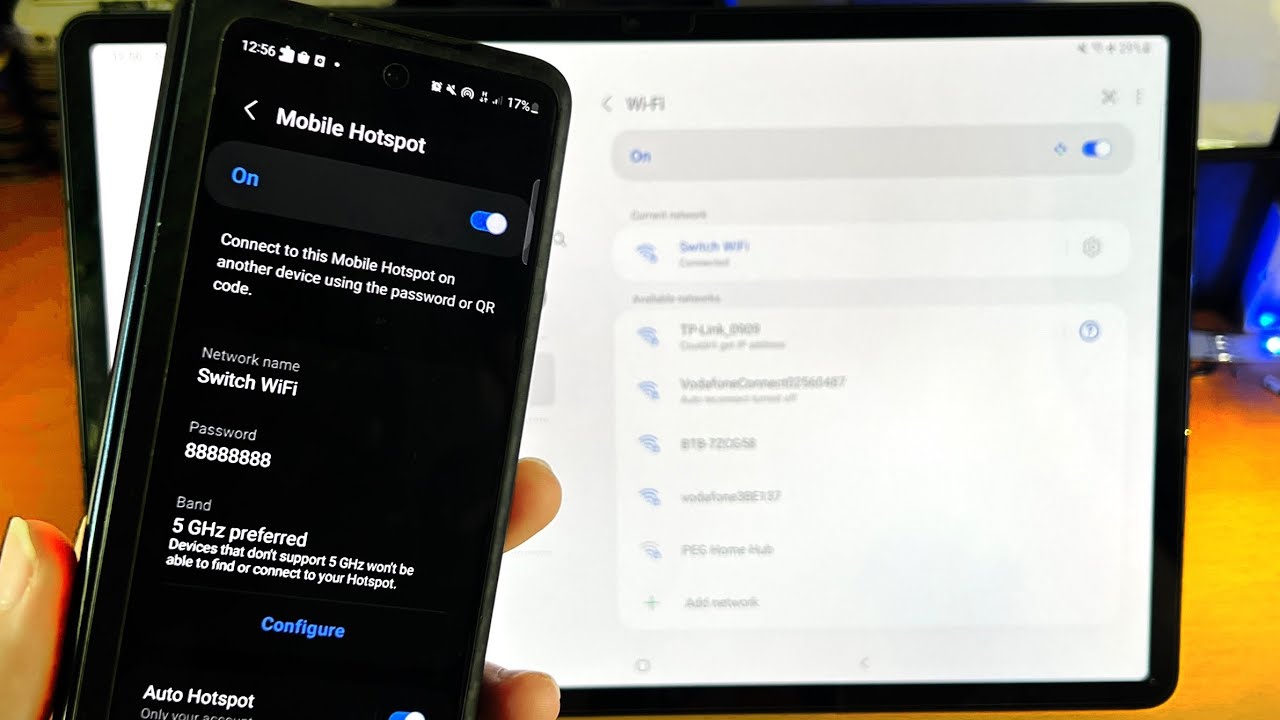Introduction
Welcome to the world of Tether, where you have the opportunity to make money using a cryptocurrency that is pegged to the value of traditional fiat currencies. Tether, often abbreviated as USDT, has become increasingly popular in the world of cryptocurrency due to its stability and accessibility. In this article, we will explore what Tether is, how it works, and most importantly, how you can make money with it.
Tether is a type of cryptocurrency known as a stablecoin. Unlike other cryptocurrencies such as Bitcoin or Ethereum, which have a volatile value, Tether is designed to maintain a 1:1 ratio with a fiat currency such as the US Dollar. This stability makes it an attractive option for those looking to minimize the risks associated with traditional cryptocurrency investments.
So, how does Tether achieve this pegged value? Tether Ltd., the company behind Tether, claims that each USDT token in circulation is backed by an equivalent amount of fiat currency in reserve. This means that for every Tether token in circulation, there should be an equivalent amount of US Dollars held in reserve.
The primary use case for Tether is as a digital alternative to traditional currency. It offers numerous benefits, such as fast transactions, low fees, and global accessibility. Additionally, Tether provides a bridge between traditional financial systems and the world of cryptocurrency, allowing users to easily move funds between the two.
Now that we have a basic understanding of what Tether is, let’s explore the various ways you can make money with this popular stablecoin. Whether you are an experienced trader or just starting out in the world of cryptocurrency, there are opportunities available that can help you grow your wealth using Tether.
What is Tether?
Tether, also known as USDT, is a popular cryptocurrency that is designed to maintain a stable value by being pegged to traditional fiat currencies, such as the US Dollar. It was launched in 2014 with the aim of providing a digital alternative to fiat currencies that can be used for transactions, investments, and other financial activities.
Unlike other cryptocurrencies like Bitcoin or Ethereum, which have a fluctuating value that can be influenced by various factors, Tether is designed to have a constant value of 1:1 with a specific fiat currency. This stability is achieved through a process called tokenization, where each Tether token represents a corresponding amount of the fiat currency it is pegged to.
The primary purpose of Tether is to provide users with a digital version of traditional currency that can be easily transferred and used for various purposes. It is particularly useful for those who want to avoid the volatility often associated with cryptocurrencies. For example, if you have 100 USDT, you can be confident that it holds the same value as 100 US Dollars.
Tether is built on various blockchain platforms, including Bitcoin, Ethereum, and Tron. This allows for easy integration with existing cryptocurrency infrastructure and enables Tether to benefit from the security and transparency of blockchain technology.
One of the key features of Tether is its transparency. Tether Ltd., the company behind Tether, claims that each USDT token is fully backed by an equivalent amount of fiat currency held in reserve. Regular audits are conducted to verify this claim and provide assurance to users that their Tether tokens are backed by real assets.
Overall, Tether aims to combine the benefits of traditional fiat currencies and cryptocurrencies. It provides the convenience, speed, and security of cryptocurrencies while maintaining the stability and familiarity of traditional currency. Whether you want to use Tether for everyday transactions, investments, or other financial activities, it offers a reliable and accessible option in the world of digital currencies.
How does Tether work?
Tether operates on the principles of tokenization and blockchain technology to maintain its stable value. Let’s dive into the mechanics behind how Tether works.
When a user wants to acquire Tether, they can do so by depositing fiat currency into Tether Ltd.’s reserve. Tether Ltd. then facilitates the creation of an equivalent amount of Tether tokens, which are issued on various blockchain platforms, including Bitcoin, Ethereum, and Tron.
These Tether tokens are designed to represent the underlying fiat currency on a 1:1 basis, meaning that each Tether token is supposed to be backed by an equivalent amount of the fiat currency held in reserve. This one-to-one ratio is what ensures the stability of Tether’s value.
Every transaction involving Tether is recorded on the blockchain, ensuring transparency and immutability. Users can transfer Tether tokens between wallets and exchange them for other cryptocurrencies or fiat currencies through supported cryptocurrency exchanges.
Tether also facilitates the redemption of Tether tokens for fiat currency. Users can submit a redemption request to Tether Ltd., and upon verification, the equivalent amount of fiat currency is transferred back to the user’s bank account.
It is important to note that Tether operates on a centralized model, meaning that Tether Ltd. has control over the issuance and redemption of Tether tokens. This differs from decentralized cryptocurrencies, where the network participants collectively govern the system.
Tether’s centralized model has both advantages and drawbacks. On one hand, it allows for greater stability and easier compliance with regulatory requirements. On the other hand, it raises concerns about transparency, as users must trust that Tether Ltd. holds the promised reserves.
To address these concerns, Tether Ltd. undergoes regular audits conducted by reputable accounting firms to verify the reserves. The audit reports are made available to the public to ensure transparency and build trust in the system.
In summary, Tether works by tokenizing traditional fiat currencies and issuing Tether tokens on various blockchain platforms. Each Tether token represents a corresponding amount of the underlying fiat currency held in reserve. Through a centralized model, Tether facilitates the issuance, transfer, and redemption of Tether tokens, providing users with a stable and convenient digital currency alternative.
The Benefits of Using Tether
Using Tether as a digital currency can offer several benefits to individuals and businesses alike. Let’s explore some of the advantages of using Tether:
- Stability: One of the primary benefits of Tether is its stability. Unlike other cryptocurrencies that experience significant price fluctuations, Tether is designed to maintain a 1:1 ratio with a specific fiat currency. This stability makes it an attractive option for those who want to minimize the risks associated with volatile cryptocurrencies.
- Fast and Low-Cost Transactions: Tether operates on blockchain technology, allowing for fast and secure transactions. Whether you are sending money to another person or making a payment to a business, Tether transactions can be completed quickly and at a fraction of the fees usually associated with traditional banking systems.
- Global Accessibility: Tether is accessible to anyone with an internet connection, regardless of their location. This global accessibility makes it a convenient option for international transactions, eliminating the need for expensive and time-consuming currency conversions.
- Privacy and Security: Tether transactions are recorded on the blockchain ledger, providing transparency and security. The decentralized nature of blockchain technology ensures that transactions are tamper-proof and resistant to fraud. Additionally, Tether allows users to maintain a level of privacy as transactions do not require the disclosure of personal details.
- Interoperability: Tether is compatible with various blockchain platforms, including Bitcoin, Ethereum, and Tron. This interoperability allows for easy integration with existing cryptocurrency infrastructure and facilitates the seamless transfer of Tether between different platforms.
- Bridge between Fiat and Crypto: Tether serves as a bridge between traditional fiat currencies and the world of cryptocurrencies. It allows users to easily move funds between the two systems, offering the benefits of cryptocurrencies while maintaining a stable value equivalent to a fiat currency.
The benefits of using Tether make it a versatile and convenient digital currency option. Whether you are a business looking for cost-effective payment solutions or an individual seeking stability and accessibility in your transactions, Tether offers a compelling solution in the ever-expanding world of cryptocurrencies.
How to Create a Tether Wallet
If you’re interested in using Tether and want to store your USDT tokens securely, you’ll need to create a Tether wallet. Here’s a step-by-step guide on how to create a Tether wallet:
- Choose a Wallet Provider: There are various wallet providers that support Tether. You can choose from hardware wallets, software wallets, or even mobile wallets. It’s essential to select a reputable provider that offers a user-friendly interface and robust security features.
- Download and Install the Wallet: Once you’ve chosen a wallet provider, visit their website or app store to download and install the wallet software. Make sure to download the official wallet from a trusted source.
- Create a New Wallet: Open the wallet software and look for an option to create a new wallet. This typically involves generating a new seed phrase, which is a series of 12 or 24 random words. Make sure to write down the seed phrase and keep it in a safe place, as it is crucial for wallet recovery.
- Set a Strong Password: During the wallet creation process, you’ll also be prompted to set a strong password. Choose a password that is unique and not easily guessable. This will add an extra layer of security to your Tether wallet.
- Verify and Backup Your Wallet: After setting up your wallet, it’s essential to verify it and create a backup. Most wallet providers will guide you through this process, which usually involves confirming your seed phrase and creating a backup file. Store the backup securely and avoid sharing it with anyone.
- Access and Use Your Tether Wallet: Once your wallet is set up and verified, you can access it using your password or other authentication methods provided by the wallet provider. From there, you’ll have a unique wallet address assigned to you, which you can use to receive and send Tether tokens.
Remember, keeping your Tether wallet secure is essential to protect your funds. Enable additional security measures offered by the wallet provider, such as two-factor authentication and biometric access, whenever possible. Regularly update your wallet software to ensure you have the latest security enhancements.
Creating a Tether wallet is a simple process that enables you to safely store and manage your USDT tokens. With your wallet set up, you’ll be ready to explore the various ways to make money with Tether and embark on your cryptocurrency journey.
Different Ways to Make Money with Tether
Tether provides various opportunities for individuals to make money and grow their wealth. Whether you’re an experienced trader or just starting out in the world of cryptocurrency, here are some different ways you can make money with Tether:
- Trading Tether on Cryptocurrency Exchanges: One of the most common ways to make money with Tether is through trading. You can take advantage of price fluctuations and market trends by buying Tether at a lower price and selling it when the price increases. This requires careful analysis of the market and familiarity with trading strategies.
- Earning Interest on Tether through Lending Platforms: Some lending platforms allow you to earn interest on your Tether holdings by lending them to other users. This is similar to traditional banking systems where you earn interest on your savings. It’s important to choose a reliable lending platform that offers competitive interest rates and provides security for your funds.
- Staking Tether and Earning Rewards: Certain blockchain networks, such as Ethereum, allow you to stake your Tether tokens by locking them up in a smart contract. In return, you earn rewards in the form of additional Tether tokens or other cryptocurrencies. Staking can provide passive income, but it’s crucial to research the staking process and consider factors like network fees and potential risks.
- Providing Liquidity for Tether Pairs on Decentralized Exchanges: Decentralized exchanges (DEXs) rely on users providing liquidity to ensure smooth trading. By providing Tether liquidity on DEXs, you can earn trading fees and rewards. This requires understanding how liquidity pools work and managing your funds effectively.
- Margin Trading with Tether: Margin trading allows you to amplify your trading potential by borrowing additional funds against your Tether holdings. This can increase your potential profits, but it also comes with higher risks. It’s advisable to have a good understanding of margin trading strategies and risk management before engaging in this activity.
- Participating in Tether Airdrops and Giveaways: Tether occasionally conducts airdrops and giveaways, where they distribute free Tether tokens to participants. Keep an eye on official Tether announcements and social media channels to stay informed about upcoming opportunities to receive free tokens.
- Freelancing and Accepting Tether as Payment: If you are a freelancer or offer goods and services online, consider accepting Tether as a form of payment. By diversifying your payment options, you open up opportunities to earn Tether directly or convert it to other cryptocurrencies or fiat currencies.
It’s important to note that making money with Tether involves risks, and success is not guaranteed. It’s crucial to educate yourself, conduct thorough research, and consider your risk tolerance before engaging in any of these activities. Additionally, seek advice from financial professionals if needed.
By leveraging the various opportunities provided by Tether, you can potentially generate income and participate in the ever-evolving world of cryptocurrencies.
Trading Tether on Cryptocurrency Exchanges
Trading Tether on cryptocurrency exchanges is one of the most popular ways to make money with Tether. By taking advantage of price fluctuations and market trends, you have the opportunity to buy Tether at a lower price and sell it when the price increases.
To get started with Tether trading, you’ll need to sign up for a cryptocurrency exchange that supports Tether. Some popular exchanges that offer Tether trading pairs include Binance, Coinbase, Kraken, and Huobi. Once you’ve registered an account and completed the necessary verification process, you can deposit funds (either fiat currency or other cryptocurrencies) and start trading.
Here are a few key factors to consider when trading Tether:
- Market Analysis: Before making any trades, it’s essential to conduct thorough market analysis. This involves studying price charts, monitoring market news and trends, and applying technical analysis tools to identify potential entry and exit points. Develop a trading strategy and stick to it, while also being flexible and adapting to changing market conditions.
- Risk Management: Trading involves some level of risk, so it’s crucial to manage your risks effectively. Set stop-loss orders to limit potential losses and take-profit orders to secure profits. Determine your risk tolerance and only trade with funds that you can afford to lose.
- Leverage Trading: Some exchanges offer leverage trading, which allows you to multiply your trading position by borrowing funds. While leverage can potentially amplify profits, it also increases the risk. Be cautious when using leverage and fully understand the associated risks before engaging in leveraged trading.
- Liquidity and Trading Volumes: Consider the liquidity and trading volumes of Tether on the exchange. Higher liquidity ensures that you can enter and exit trades smoothly without significant slippage. It’s advisable to trade on reputable exchanges with high trading volumes to minimize the impact of market manipulation and ensure fair pricing.
- Stay Informed and Stay Updated: Stay informed about market news, regulatory developments, and any updates related to Tether. These factors can affect Tether’s price and market sentiment, potentially offering trading opportunities or risks. Keep an eye on reliable news sources and official announcements to make informed trading decisions.
Remember that trading Tether or any other cryptocurrency involves inherent risks, and profits are not guaranteed. It requires a combination of knowledge, skills, and experience. It’s advisable to start with a small investment and gradually increase your trading positions as you gain more experience and confidence.
By carefully analyzing the market, managing risks, and continually learning and improving your trading skills, you can potentially make profits by trading Tether on cryptocurrency exchanges.
Earning Interest on Tether through Lending Platforms
Another way to make money with Tether is by earning interest on your Tether holdings through lending platforms. These platforms allow you to lend your Tether tokens to borrowers in exchange for interest payments. This process is similar to how traditional banks operate, where depositors earn interest on their savings.
To earn interest on your Tether, you’ll need to find a reputable lending platform that supports Tether lending. Some popular platforms include Celsius Network, BlockFi, and Nexo. Here’s how it works:
- Select a Reliable Lending Platform: Do thorough research and choose a lending platform that offers competitive interest rates, reliable security measures, and transparent operations. Look for platforms that have a good reputation, provide insurance on funds, and have a user-friendly interface.
- Create an Account: Sign up for an account on the lending platform and complete any necessary verification processes. This may involve providing identification documents and setting up two-factor authentication for added security.
- Deposit Tether: Transfer your Tether tokens to your lending platform account. The platform will securely hold your Tether and use it to lend to borrowers, such as traders or businesses, who require liquidity.
- Start Earning Interest: Once your Tether deposit is complete, you’ll start earning interest on your holdings. The interest rates offered by lending platforms can vary, so compare different platforms to find the best rates available. Some platforms may offer higher interest rates for longer-term deposits.
- Monitor and Withdraw: Keep track of your Tether balance and the interest accrued. Most lending platforms calculate interest on a daily or monthly basis. You can typically withdraw your interest earnings or reinvest them to compound your returns.
While earning interest on Tether can be an attractive way to generate passive income, it’s important to consider the associated risks. Some key points to keep in mind include:
- Platform Risk: Assess the risk profile of the lending platform, including their security measures, reputation, and insurance coverage for deposited funds. Choose platforms with a proven track record and robust security protocols.
- Counterparty Risk: Understand that lending platforms might lend your Tether to borrowers who may default on their loans. Assess the platform’s risk management practices and loan collateralization methods to mitigate this risk.
- Interest Rate Volatility: Interest rates offered on lending platforms can vary over time. Be prepared for fluctuations in rates and adjust your strategy accordingly.
Earning interest on Tether through lending platforms can be an attractive option for those who prefer a more passive approach to earning income from their crypto holdings. However, it’s crucial to do thorough research, choose reputable platforms, and understand the associated risks before depositing your Tether tokens.
Staking Tether and Earning Rewards
Staking Tether is another method that allows you to earn rewards while holding your Tether tokens. Staking involves locking up your Tether in a wallet or smart contract to support the operations of the underlying blockchain network. In return for your contribution, you receive rewards in the form of additional Tether tokens or other cryptocurrencies.
To start staking Tether and earning rewards, follow these steps:
- Choose a Staking Platform: Look for reputable platforms or wallets that support Tether staking. Some well-known platforms include Binance, Kraken, and Ethereum-based DeFi protocols like Aave or Compound.
- Select the Staking Option: Once you’ve chosen a platform, navigate to the staking section and select the Tether staking option. Take note of the minimum staking requirements, lock-up periods, and any fees associated with staking.
- Create or Connect a Wallet: Depending on the platform, you may need to create a wallet or connect an existing wallet that supports Tether. Ensure that the wallet you choose is compatible with the staking platform and has a good reputation for security.
- Lock Up Your Tether: Transfer your Tether tokens to the staking platform or designated smart contract address. Follow the instructions provided by the platform to lock up your tokens for the required period of time.
- Start Earning Rewards: Once your Tether is successfully staked, you will begin earning rewards. Rewards are typically distributed periodically, and you may have the option to compound your rewards by restaking them.
It’s important to consider the following points when staking Tether:
- Staking Requirements: Ensure that you meet the minimum staking requirements, including the minimum amount of Tether needed for staking and any lock-up periods. Take note of any potential penalties for early withdrawal.
- Platform Security: Research the staking platform or wallet’s security practices and reputation to ensure the safety of your Tether tokens. Choose platforms with robust security measures, such as cold storage and two-factor authentication.
- Reward Rates and Distribution: Compare the reward rates offered by different staking platforms to find the most attractive option. Consider how rewards are distributed and the frequency of payouts.
- Network Considerations: Different blockchain networks may have varying requirements and reward structures for staking. Understand the specifics of the network on which you are staking your Tether.
- Market Volatility: Keep in mind that the price of the Tether token may fluctuate during the staking period. Be prepared for potential price volatility and consider your long-term investment goals.
Staking Tether can be a way to earn passive income for holding your tokens and supporting the stability and security of the blockchain network. As with any investment strategy, do thorough research, understand the risks involved, and choose reputable platforms to stake your Tether tokens.
Providing Liquidity for Tether Pairs on Decentralized Exchanges
Providing liquidity for Tether pairs on decentralized exchanges (DEXs) is another way to make money with Tether. Decentralized exchanges operate on blockchain technology and rely on liquidity providers (LPs) to ensure that there are sufficient funds available for trading.
Here’s a step-by-step guide on how to provide liquidity for Tether pairs on DEXs:
- Select a Decentralized Exchange: Choose a decentralized exchange that supports Tether pairs and has a good reputation for security and trading volume. Uniswap and SushiSwap are popular DEXs that often have Tether trading pairs available.
- Create a Wallet: Set up a compatible wallet that supports the DEX you’ve chosen. Ensure that your wallet is compatible with the specific blockchain network on which the DEX is built, such as Ethereum.
- Obtain Tether and the Other Token of the Pair: Get the Tether tokens and the other cryptocurrency that will be paired with it. For example, if you’re providing liquidity for the USDT/ETH pair, you will need both Tether and Ether.
- Access the Liquidity Pool: Access the liquidity pool section of the DEX you’ve chosen. Connect your wallet to the DEX interface and select the Tether pair you want to provide liquidity for.
- Deposit Funds into the Pool: Deposit an equal value of Tether and the other token into the liquidity pool. The pool will automatically calculate the appropriate ratio for you. Ensure that you have an adequate balance of both tokens to contribute to the liquidity pool.
- Receive LP Tokens: In return for providing liquidity, you will receive LP tokens that represent your share of the liquidity pool. These tokens can be used to withdraw your share of the pool at any time.
- Monitor and Adjust: Keep an eye on the performance of the liquidity pool and your LP tokens. If necessary, you can adjust your liquidity position by depositing or withdrawing funds to maintain the desired balance.
- Earn Trading Fees and Rewards: As traders use the DEX to trade the Tether pair you’ve provided liquidity for, you’ll earn a portion of the trading fees. Additionally, some DEXs offer additional rewards or incentives for liquidity providers, such as governance tokens or staking rewards.
Here are a few points to consider when providing liquidity for Tether pairs on DEXs:
- Impermanent Loss: Providing liquidity involves the risk of impermanent loss, where the value of the tokens in the liquidity pool fluctuates compared to holding the tokens separately. Understand the concept of impermanent loss and consider the potential impact on your overall returns.
- Diversification: Consider diversifying your liquidity provision across different Tether pairs or DEXs to minimize risks and maximize potential returns.
- Slippage and Transaction Costs: Be aware of slippage and transaction costs when depositing or withdrawing funds from the liquidity pool. These costs can reduce your overall returns, especially during times of high market volatility.
- Research and Track DEX Performance: Stay informed about the performance, security measures, and reputation of the DEXs you’re using. Research their decentralization level, community traction, and any potential risks associated with the platform.
Providing liquidity for Tether pairs on decentralized exchanges can be an opportunity to earn income by facilitating trades and ensuring liquidity for the market. However, it’s crucial to understand the risks involved, do thorough research, and monitor your liquidity provision to optimize your returns.
Margin Trading with Tether
Margin trading with Tether offers the opportunity to amplify your trading positions and potentially increase your profits. Margin trading allows you to borrow funds against your Tether holdings, enabling you to trade with more capital than you actually own. While margin trading comes with higher risks, it can be a lucrative strategy if executed properly.
Here’s how you can engage in margin trading with Tether:
- Select a Margin Trading Platform: Choose a reputable cryptocurrency exchange that offers margin trading with Tether. Some popular platforms that support Tether margin trading include Binance, Kraken, and Bitfinex. Ensure that the platform has a user-friendly interface, adequate liquidity, and robust security measures.
- Open a Margin Trading Account: Sign up for a margin trading account on the selected exchange. Complete any necessary verification requirements and enable two-factor authentication (2FA) for added security.
- Deposit Tether: Deposit Tether into your margin trading account. The amount of Tether you deposit will determine the maximum amount of funds you can borrow for margin trading. Be aware that there may be specific minimum deposit requirements set by the platform.
- Place Margin Orders: With funds in your margin trading account, you can place margin orders. These orders typically allow you to go long (buy) or go short (sell) Tether to take advantage of potential price movements. Be mindful of the leverage ratios available and set appropriate stop-loss and take-profit levels to manage risk.
- Manage Margin Positions: Regularly monitor your margin positions and the overall performance of the market. Margin trading comes with the risk of liquidation, where your position is closed automatically if it moves against you and crosses a certain threshold. Understand the liquidation process and set margin thresholds wisely to protect your investments.
- Interest and Fees: Margin trading involves borrowing funds, so you’ll need to pay interest on the borrowed amount. Familiarize yourself with the interest rates, margin fees, and any other associated costs on the platform. Calculate these costs beforehand to assess the overall profitability of your margin trading strategy.
Keep the following points in mind when engaging in Tether margin trading:
- Risk Management: Margin trading carries higher risks due to the potential for greater losses. Utilize risk management tools such as stop-loss orders and take-profit orders to limit potential losses and secure profits. Only trade with funds you can afford to lose.
- Understand Leverage: Leverage amplifies both potential profits and losses. Higher leverage ratios offer more significant potential profits but also increase the risk. Understand leverage and use it wisely, considering your risk tolerance and trading strategy.
- Education and Analysis: Proper education and thorough market analysis are essential for successful margin trading. Stay updated on market trends, technical analysis, and news that may impact Tether’s price. Develop a trading strategy based on your analysis and continually refine it as you gain experience.
- Start Small and Test Strategies: If you’re new to margin trading, start with smaller positions and gradually increase your trading size as you gain proficiency. Use demo accounts or paper trading options to test your strategies before committing real funds.
Margin trading with Tether can offer the potential for increased profits and trading opportunities. However, it’s critical to understand the associated risks, manage your leverage carefully, and continuously educate yourself to navigate the complexities of margin trading successfully.
Participating in Tether Airdrops and Giveaways
Participating in Tether airdrops and giveaways can be an exciting way to potentially receive free Tether tokens and increase your holdings. Tether occasionally conducts airdrops and giveaways to distribute tokens to the community, raise awareness, or reward loyal users. While the chances of receiving a significant amount of Tether through airdrops and giveaways may vary, it can still be a rewarding opportunity.
Here’s how you can participate in Tether airdrops and giveaways:
- Follow Official Tether Channels: Stay up to date with official announcements and news from Tether by following their official channels, including social media accounts (such as Twitter, Telegram, and Reddit) and their official website. This will ensure that you are aware of any upcoming airdrops or giveaways.
- Monitor Airdrop and Giveaway Requirements: When Tether announces an airdrop or giveaway, carefully read the requirements and eligibility criteria to ensure you meet them. This may include tasks such as following social media accounts, retweeting posts, sharing content, or completing specific actions outlined by Tether.
- Submit Relevant Information: If necessary, provide the required information, such as wallet addresses or contact details, as specified in the airdrop or giveaway instructions. Ensure that you submit accurate and valid information to be eligible for participation.
- Be Active and Engage: Participate actively in the airdrop or giveaway campaign by performing the required tasks. Engage with Tether’s social media accounts by liking, commenting, and sharing relevant content. This can increase your chances of being selected for the airdrop or giveaway.
- Stay Vigilant and Avoid Scams: Be cautious of phishing attempts or scams that may impersonate Tether airdrops or giveaways. Always verify the legitimacy of the communication channels, double-check the official announcements, and never provide personal or sensitive information unless you are certain it is from Tether’s official sources.
- Stay Positive and Patient: Winning a significant amount of Tether through airdrops or giveaways might be rare, as they are often distributed among a large number of participants. Maintain a positive mindset and understand that the main goal is to be involved in the Tether community and potentially receive a small reward for your participation.
Participating in Tether airdrops and giveaways offers the possibility of receiving additional Tether tokens at no cost. While the value received might vary, it can contribute to increasing your Tether holdings or provide an opportunity to explore new projects or platforms that accept Tether as a form of payment.
Remember, it’s important to remain vigilant, stay informed about official Tether announcements, and be aware of potential scams. Engage actively, enjoy participating in the Tether ecosystem, and have patience as airdrops and giveaways are usually conducted periodically.
Freelancing and Accepting Tether as Payment
Freelancing and accepting Tether as payment is a practical and innovative way to make money with Tether. If you offer services or products online, accepting Tether as a form of payment can open up new opportunities and broaden your client base. It allows you to tap into the advantages of cryptocurrency transactions while adding diversity to your income streams. Here’s how you can get started:
- Showcase Your Skills: Highlight your skills and expertise in your field of freelancing. Build a professional portfolio or website that demonstrates your capabilities and showcases your previous work. This will attract potential clients who are interested in paying with Tether.
- Join Freelance Platforms: Register on popular freelance platforms that support Tether payments. Websites like CryptoGrind, Bitwage, and Ethlance allow you to connect with clients who specifically seek freelancers accepting cryptocurrency payments, including Tether.
- Advertise Tether as a Payment Option: Clearly specify in your freelance profile or on your website that you accept Tether as a payment method. This will attract clients who are interested in utilizing cryptocurrencies for transactions.
- Establish Payment Terms: Define your payment terms and agreements when accepting Tether. Determine the exchange rate you will use for pricing your services, and clearly communicate it to clients. Consistency and transparency in your payment terms will help build trust and confidence with your clients.
- Ensure Security and Ease of Use: Provide clients with your Tether wallet address to facilitate the payment process. Ensure that your wallet is secure and that you are using a reputable wallet provider. Consider using QR codes or payment gateways to simplify the payment process for your clients.
- Stay Updated on Tether Conversion: Stay informed about the conversion rates of Tether to other currencies, especially if you plan to convert your Tether earnings into fiat or other cryptocurrencies. Regularly monitor the Tether exchange rates to optimize your financial decisions.
- Track and Manage Your Finances: Keep a record of your Tether payments and transactions. Consider using accounting software or spreadsheets to track your earnings and manage your finances effectively. This will help you evaluate the profitability of accepting Tether as a payment method.
Accepting Tether as payment for your freelance work can offer several benefits. It allows for faster, borderless transactions with lower fees compared to traditional payment methods. Additionally, it opens up opportunities to work with clients from around the world who prefer using cryptocurrencies.
Remember to communicate with your clients clearly, provide excellent customer service, and showcase the advantages of using Tether for payments. As the cryptocurrency industry continues to grow, accepting Tether can position you as an innovative and flexible freelancer in an evolving digital marketplace.
Conclusion
Tether provides numerous opportunities for individuals to make money and grow their wealth in the world of cryptocurrencies. Whether you’re an experienced trader or just starting out, there are different ways to leverage Tether and generate income. From trading Tether on cryptocurrency exchanges to earning interest through lending platforms and staking, there are options to suit various risk preferences and investment goals.
Participating in Tether airdrops and giveaways can provide the chance to receive additional tokens at no cost, while freelancing and accepting Tether as payment can give you a competitive edge in the digital marketplace. It’s essential to consider the risks associated with each method and pursue opportunities that align with your knowledge and comfort level.
When engaging in any Tether-related activities, it’s crucial to stay informed, do thorough research, and follow best practices for security. Choose reputable platforms, exercise caution to avoid scams, and regularly update your knowledge of Tether and the broader cryptocurrency industry.
Remember that making money with Tether, like any investment or financial endeavor, requires careful consideration and risk management. It’s advisable to diversify your investments, evaluate the potential returns and risks, and seek advice from financial professionals if needed.
By leveraging the benefits of Tether, such as stability, fast transactions, and global accessibility, you can actively participate in the world of cryptocurrencies and potentially grow your wealth. Whether you choose to trade, lend, stake, provide liquidity, freelance, or participate in airdrops, Tether offers opportunities to explore and achieve your financial goals in this dynamic digital landscape.

























